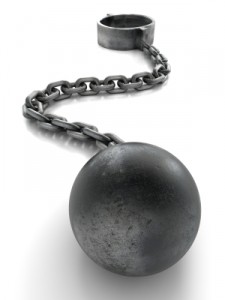 Lots of people have rental property. Some people purchase a house but then have to move and cannot sell it, so rather than let it be foreclosed or sit vacant, they become landlords. Others purchase a house intending to rent it out and make a profit. However rental property is acquired, there is a lot of it out there, so it is important to understand how rental property is treated in Chapter 7 and Chapter 13 bankruptcy cases.
Lots of people have rental property. Some people purchase a house but then have to move and cannot sell it, so rather than let it be foreclosed or sit vacant, they become landlords. Others purchase a house intending to rent it out and make a profit. However rental property is acquired, there is a lot of it out there, so it is important to understand how rental property is treated in Chapter 7 and Chapter 13 bankruptcy cases.
First, rental property is treated as an asset. In Chapter 7 cases this means that if the debtor has equity in the property (property value – mortgages and other lienholders = equity or lack thereof) then the property may be nonexempt. Nonexempt property can be seized by the Chapter 7 trustee, sold, and the proceeds paid to the creditors. In Chapter 13 cases, nonexempt property increases the amount that must be paid to the unsecured creditors in the Chapter 13 plan. More nonexempt property may mean a higher plan payment.
Second, rental property may contribute income to the household. Rental income minus expenses equals net income that must be accounted for on the means test. This income can cause a plan payment to be higher than it would be if the rental income did not exist. When a debtor has regular income from the rental property but it is not enough to pay the costs associated with the property then the trustee may object to confirmation of the plan. Trustees don’t like Chapter 13 plans that don’t make financial sense. A plan that proposes to keep rental property that isn’t paying for itself is likely to be denied confirmation.
Bankruptcy is a good opportunity to unload rental property that is not profitable. Debtors can surrender the property which allows them to discharge the mortgage with no payment. Debtors must be careful if they are collecting rent from tenants after filing bankruptcy. The debtor continues to own property after filing but the mortgage lender may have a security interest in any rents received by the debtor.